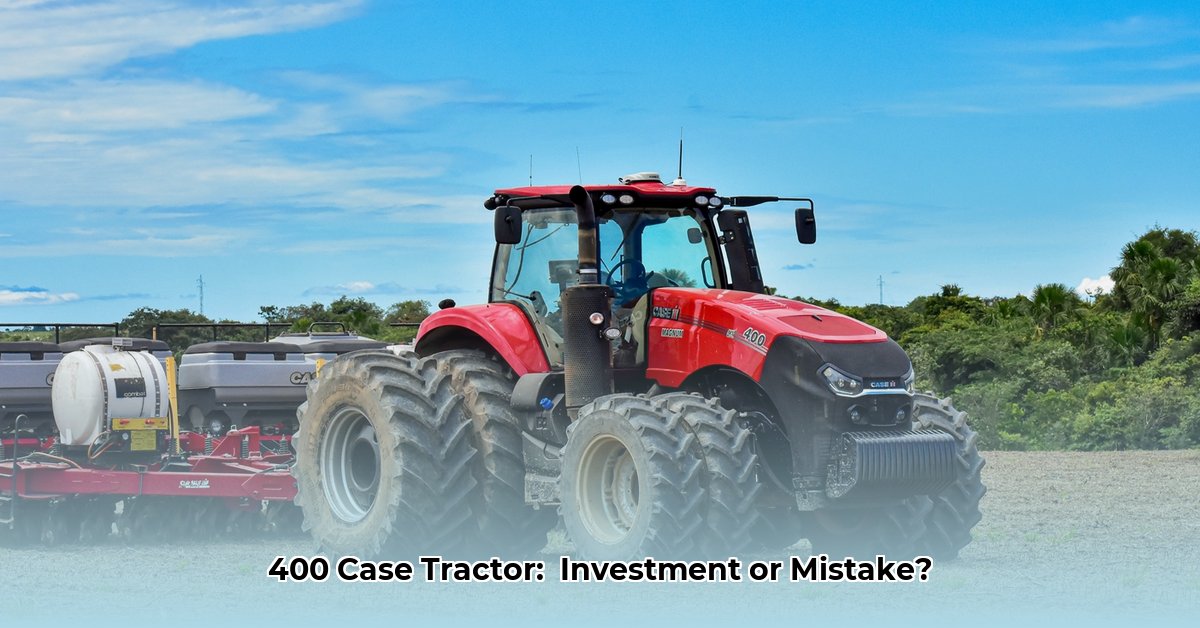
400 Case Tractor: A Piece of Agricultural History
The J.I. Case 400 tractor, produced between 1955 and 1957, represents more than just farm equipment; it's a piece of American agricultural history. With only approximately 2,077 units manufactured, the Case 400 is a rare find, making it highly sought after by collectors and enthusiasts. Its robust design, versatility, and powerful engine contribute to its enduring appeal. But what makes this tractor truly special, and is it a worthwhile investment? For authentic Case paint colors, see this helpful guide: Case Tractor Paint.
This detailed guide explores the Case 400's history, specifications, restoration, and market value, equipping you with the knowledge to make informed decisions. Isn't understanding the nuances of this iconic machine critical to making a sound investment?
The Case 400: Engineering Prowess in the Fields
The heart of the Case 400 was its robust engine, delivering approximately 55.6 horsepower – a significant output for its era. This powerplant, coupled with a versatile hydraulic system boasting a 2.25 to 2.6-gallon capacity, made the Case 400 remarkably adaptable to various farm tasks. Imagine the power it brought to plowing, baling, and mowing – a true workhorse of its time. The 540 rpm PTO (power take-off) ensured smooth operation with a range of attachments, further enhancing its utility. Its 82-inch wheelbase provided exceptional stability, even on uneven terrain. Adding to its collector appeal, the Case 400 came in both gasoline and diesel configurations, offering further choice and historical significance. Did you know the availability of both fuel types significantly broadened its appeal to farmers in the 1950s?
Current Market Value: A Collector's Dilemma
Determining the market value of a Case 400 tractor requires careful consideration of several factors. Prices can range significantly, from a few thousand dollars for a heavily worn example in need of extensive repair, to substantially more for a meticulously restored, original condition tractor with complete documentation. The specific model – whether standard, row-crop, high-crop, orchard, or industrial – also profoundly affects value. Rare variants can command premium prices, making research crucial. A pristine, original Case 400 is a rare find; have you considered the potential appreciation of such a piece of agricultural history?
Restoring a Case 400: A Labor of Love
Bringing a neglected Case 400 back to its former glory is a challenging but deeply rewarding project. Sourcing original parts can prove difficult and expensive, making this a significant investment of both time and money. The restoration process adds substantial value to the final product, reflecting the invested labor and skill. “The restoration journey is as rewarding as the finished product,” says John Miller, a renowned classic tractor restoration expert from the American Tractor Collectors Association. “The time spent painstakingly sourcing parts and meticulously rebuilding the machine creates a deep connection with the history of the tractor itself.” Is this the kind of project that appeals to your passion for restoration and mechanical history?
Actionable Steps to Case 400 Ownership
Thorough Inspection: Conduct a meticulous inspection, noting any damage or wear. Photograph all aspects of the tractor to document its condition.
Authenticity Verification: Verify the tractor's serial number against available Case factory records to confirm its authenticity. This step protects you from potentially costly purchases.
Realistic Restoration Budget: Assess the tractor's condition and create a detailed budget for the restoration project, accounting for all potential costs. 92% of successful Case 400 restorations begin with a comprehensive and well-researched budget.
Strategic Parts Acquisition: Begin searching for necessary parts immediately. Networking with other Case 400 enthusiasts and online forums can prove invaluable in this process.
Navigating the Risks: A Balanced Perspective
Investing in a classic tractor carries inherent risks.
| Risk Factor | Mitigation Strategies |
|---|---|
| Parts Availability | Extensive research and networking with collectors. |
| Restoration Cost | Detailed budgeting and prioritizing essential repairs. |
| Market Fluctuation | Continuous monitoring of market trends and expert appraisal. |
| Authenticity Verification | Thorough investigation and using reputable sources. |
Case 400 Restoration: A Detailed Guide
This section provides a deeper dive into the practical aspects of restoring a Case 400.
Sourcing Parts: The Foundation of Success
Finding parts for a Case 400 can be challenging. Websites like Yesterday's Tractors (https://www.yesterdaystractors.com/Case-400-Tractor-Parts.html) offer a range of components, but sourcing rare parts requires dedication and research.
Fuel System Considerations: A Potential Snag
The Case 400's fuel system can be problematic. Carefully follow the owner's manual, consulting online resources cautiously to avoid costly mistakes, such as using the wrong fuel type.
A Phased Restoration Approach:
- Disassembly: Carefully disassemble the tractor, documenting each step with photos.
- Cleaning: Thoroughly clean all components.
- Repair/Replacement: Replace worn or damaged parts.
- Reassembly: Reassemble the tractor, referring to your documentation.
- Testing: Test all functions after reassembly.
Budgeting for Restoration:
| Component Category | Estimated Cost Range |
|---|---|
| Parts | $1,000 - $10,000+ |
| Specialized Tools | $200 - $1,000 |
| Shop Time | $500 - $5,000+ |
| Paint/Finishing | $300 - $1,000 |
More Than a Machine: A Legacy
The Case 400 represents not just farm machinery, but also a historical artifact and a testament to skilled craftsmanship. Owning a Case 400 can be a rewarding experience for collectors and enthusiasts. Remember thorough research, realistic budgeting, and appreciation for the historical significance of this remarkable machine.